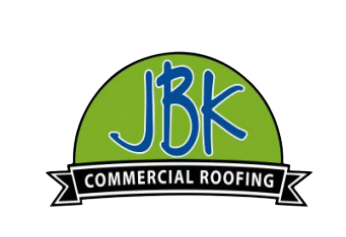Winterize Your Roof: How To Maintain Your Business' Roof Through The Winter Weather
Winter temperatures can be harsh on your commercial metal roof. With the right information, you can protect its integrity against harsh elements like rain and sleet. Roofs are exposed to external elements one hundred percent of the time. That means proper care needs to be taken to preserve your property. Moisture is problematic for roofs. In the winter, it can turn into ice which is heavy and constricting. There are many different ways you can winterize your roof for optimal performance and lessen the chances of damages.
HOW TO PREP YOUR COMMERCIAL ROOF FOR WINTER WEATHER
CHECK THE EXTERIOR
The first step is to look for exterior damages, dents to the metal. Before the heavy rain and sleet sets in there shouldn’t be blemishes that could result in more extensive problems. Issues you are looking for are rust, stains, warping, mold or anything else that seems out of the ordinary. If you see standing water that could be indicative of a more significant problem. But, don’t jump to conclusions if you’ve recently had wet weather. Keep an eye on it. If it’s still there in a couple of days, then you need to get your roofing contractor out to for a maintenance inspection.
CLEAN GUTTERS & DOWNSPOUTS
The roof has the responsibility of protecting the building and structure from external factors like wet winter weather. The gutters are a drainage system designed to move water away from the building. They assist the roof by capturing runoff and send it through the drains to keep it from becoming standing water that could cause damage. Fall weather can include a lot of high winds and rain because of the slow change in temperatures. Branches, dirt, and other debris can make their way into the gutters as the leaves start falling from the trees. A backup of these items in the drain could result in standing water and structural damages. Have your gutters and downspouts cleaned in the winter to limit the chances of ice being present on your roof?
TRIM TREES
Commercial buildings with trees that hang overhead or nearby need to have the limbs pruned or removed. In the fall, trees and their leaves begin to change due to the lack of chlorophyll production. The falling of these leave provides building owners with the opportunity to assess the condition and health of the tree before it damages the metal roof. The harsh winds, rain, and sleet invite movement from the trees that could cause unnecessary abrasion. Any branch that is already broken or weak could fall and also cause damage to the roof. Trimming trees is potentially DIY maintenance. But, if you have any questions or concerns hire a professional landscaper that will complete the project for you and dispose of the debris.
CHECK ATTIC VENTILATION
Attics and roofs go hand-in-hand. Attics can be vented or unvented. The decision was made at the time of construction. What you need to do is confirm whether or not yours is vented or unvented and prepare it appropriately for the changing temperatures. Ventilation will:
- Prevent the build-up of moisture
- Regulate temperature
- Limit heat build up
A lot of moisture is released into the air when there is sleet and snow. The ventilation plays a role in keeping temperatures and humidity at optimal performance. As the owner of a commercial roof, it’s a good idea to keep an eye on this area. If you notice water stains, mold, or mildew, there could be an issue with your attic not venting correctly. Also, note if it begins to smell wet or damp. In the event, any of the signs mentioned above present themselves, hire a roofing contractor for an inspection.
CHECK THE TRIMMINGS & FLASHING
Trimmings and flashings are part of the roofing system that act as a barrier between the edge of the building and where the roofing panels finish. Proper installation will prevent these things from coming loose. But, inspection before the cold weather hits will confirm that there isn’t debris or other objects that have wedged themselves into the seam that could cause a problem. Heavy snows might not be an issue for your area, but ice can be a problem. Metal naturally will expand and contract as the temperatures fluctuate. Anything wedged in between might form a gap on its own. Add in the rain/sleet plus dropping temperatures and the water could turn to ice and penetrate the structure. Having these areas checked can save you money.
SCHEDULE PREVENTATIVE MAINTENANCE
Preventative metal roofing maintenance is an investment to protect your roof from severe temperatures experience during the winter months. Hiring a trusted metal roofing contractor to review the health of your current system will afford you the opportunity to take the steps needed not to experience damages brought on by the harsh weather. Preventative services include an inspection of the surface, downspouts, drains, and other areas that could impact the performance of your roof.
Early detection with JBK Roofing will lead to a longer lifespan and save you thousands of dollars in repairs.
